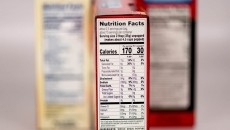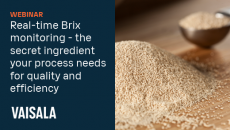X-ray irradiation of asparagus promises shelf life and safety boosts

Exposing the vegetable to the irradiation treatment post packaging not only reduces aerobic bacteria but also maintained up to 20% more initial sugar content compared to non-treated produce, said lead researcher Professor Joongmin Shin, from the University of Wisconsin–Stout.
The study – The Effect of Low-dose x-ray Irradiation on the Quality of Fresh-cut Asparagus in Microwaveable Vacuum Skin Packs – states that while the vegetable is highly popular with consumers it has a “very limited shelf life because of its high respiration rate, rapid moisture loss and microbial susceptibility”.
Prof Shin said that further treatment of minimally processed fresh asparagus may be necessary as it has relatively high initial microbial counts – ranging from 104 to 106 cfu/g (colony-forming units).
Current methods, such as chlorine washes, can have a limited effect “because of their rapid inactivation as a result of interaction with organic material and difficulty reaching into tissue crevices”, he added in the research published in the journal HortScience.
X-ray irradiation advantages
As well as enhancing shelf life and enhancing safety, the scientist outlined a number of other advantages in employing ionizing irradiation. These included minimal product damage because of no increase in product temperature and a reduced risk of recontamination following application as it takes place after packing.
The paper said x-ray irradiation is the newest in ionizing irradiation technologies that is commercially used for foods. Possessing broadly similar properties as gamma ray, x-ray can offer greater flexibility as it can be turned on and off. It also does not involve radioactive substance and is free from harmful radioactive waste handling or disposal issue.
It also has “less negative consumer perception than gamma irradiation because consumers are familiar with medical x-ray”, said the study.
Method
Peruvian asparagus was cleaned, trimmed, and sanitised before being vacuum skin-packaged (VSP) in a tray pack. A breathable lid film was vacuum-sealed to protect the product from contamination and allow for gas exchange.
It was then vacuum sealed packed ( VSP) which modified the package atmosphere, and exposed to a target dose of 1.0 kGy or left untreated. Control asparagus was also place in low-density polyethylene (LDPE) bags as a control.
All samples were stored at 4C for 24 days and checked periodically to evaluate elements such as headspace gas content, microbial growth, water soluble sugar content, and enzyme activity.
Results
The study found that a dose of 1.0 kGy reduced initial microbial population up to 3.8 log (cfu)/g and maintained 20% more of the initial sugar content relative to the non-irradiated VSP asparagus.
It also curbed Phenylalanine ammonia-lyase (PAL) activity. This is significant as PAL is the main enzyme that causes lignification and toughness, said Prof Shin.
The team said further research was necessary to explore how the x-ray treatment affects sensory and nutritional factors.
The Effect of Low-dose X-ray Irradiation on the Quality of Fresh-cut Asparagus in Microwaveable Vacuum Skin Packs by Joongmin Shin, Bruce Harte, Janice Harte, Kirk Dolan published by HortScience 46(1):64–69. 2011














